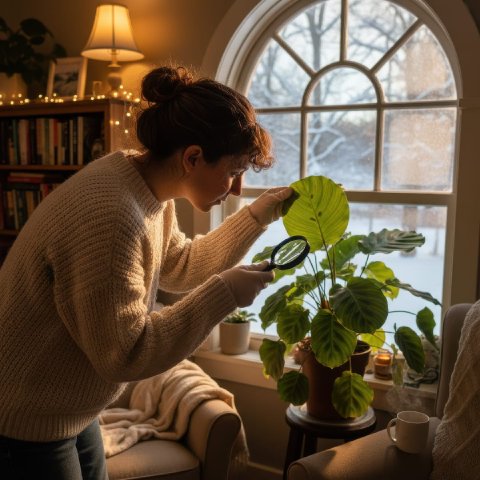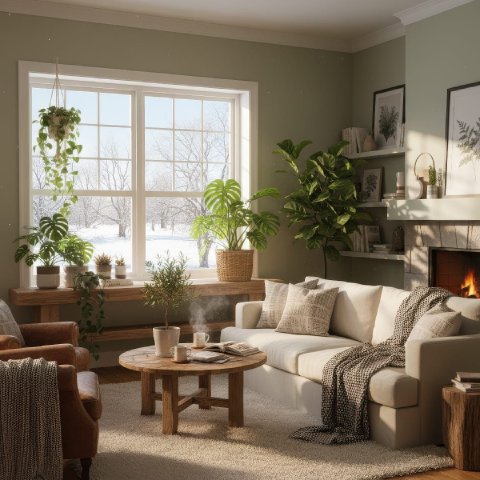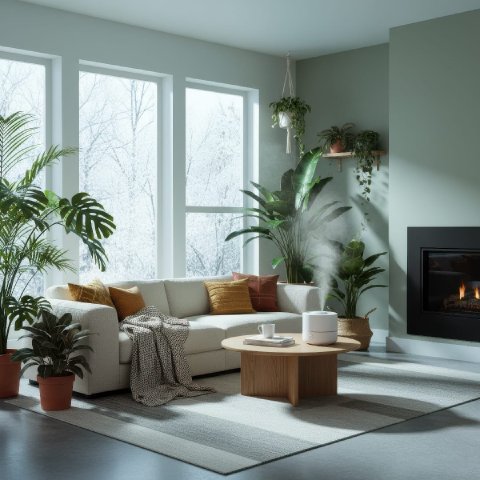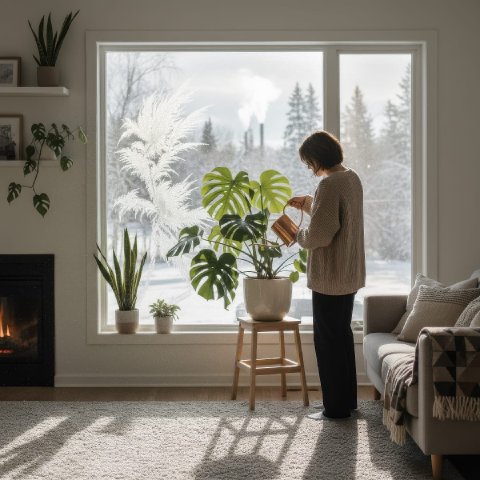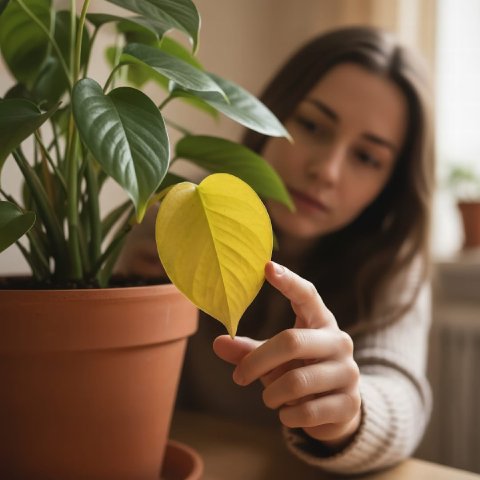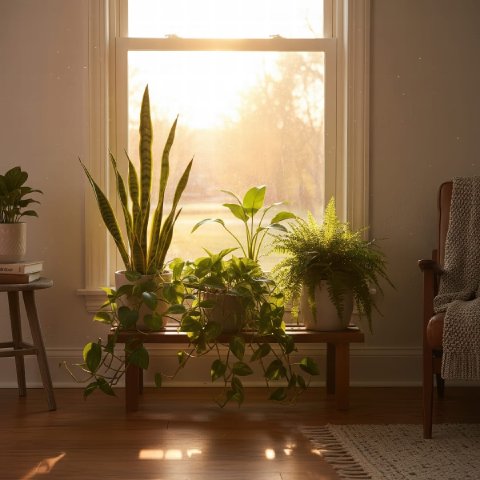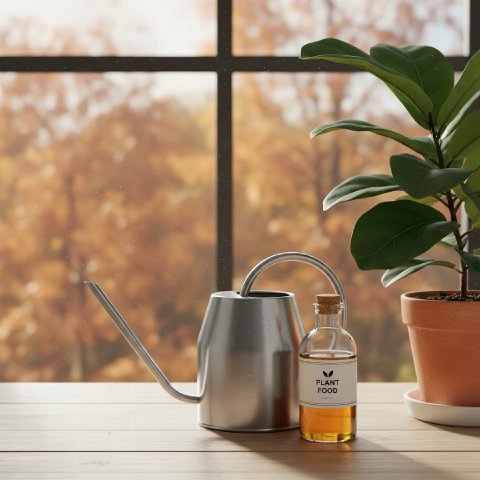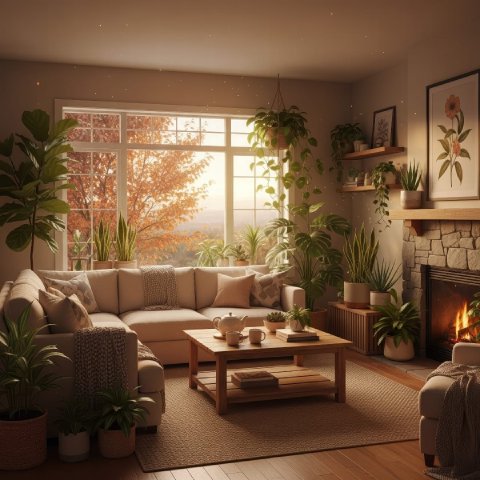🪴 In This Guide 🪴
🌡️ The Ideal Temperature Range
Most houseplants are happiest between 60–75°F (16–24°C) during the day, with a slight dip at night.
A brief chill in the high 50s won’t hurt them, but prolonged cold slows growth and can lead to leaf drop. Below 50°F (10°C), many tropicals start to suffer.

Temperature can vary more than you think inside one room. The air near a bright window can be ten degrees cooler than the spot by your sofa.
A small digital thermometer will tell you exactly what your plants are feeling.
❄️ Cold Spots and Draft Traps
Windowsills look perfect in winter light, but cold glass can chill roots and leaves.
Slide pots back a few inches or use a small riser so they’re not sitting directly on the cold surface.
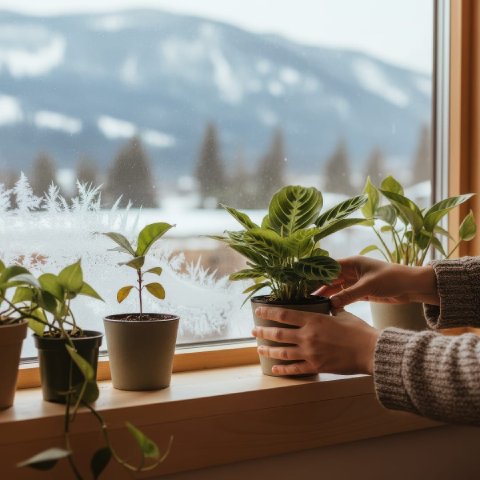
Curtains can also trap pockets of cold air around your plants overnight. Keep them slightly open or move the plants inward before bedtime.
Drafts from doors, poorly sealed windows, or often-opened balconies are just as harsh. Sensitive species like Ficus, Alocasia, or Calathea can lose leaves after one cold night.
🔥 Heat Sources: Hidden Hazards
Heaters and radiators might save you, but they can roast your plants.
Keep pots at least 2–3 feet away from direct heat. If that’s not possible, use a reflective board or piece of cardboard as a simple barrier.

Plants near air vents face a different problem-bursts of hot air that dry their leaves. Try redirecting vents upward or closing the ones closest to your plant shelves.
Warm air rises, so plants on high stands or hanging planters may also dry out faster. Check them more often and water accordingly.
🪴 Small Adjustments That Make a Big Difference
A few simple tweaks can stabilize your plant’s environment and prevent cold- or heat-related stress:
- Move plants off the floor. Air at ground level is often several degrees colder.
- Group plants together. They share humidity and stay warmer collectively.
- Use insulating pots or sleeves. Ceramic or double-potted containers help protect roots.
- Avoid sudden moves. Shifting a plant from a cold spot to direct heat overnight can shock it.
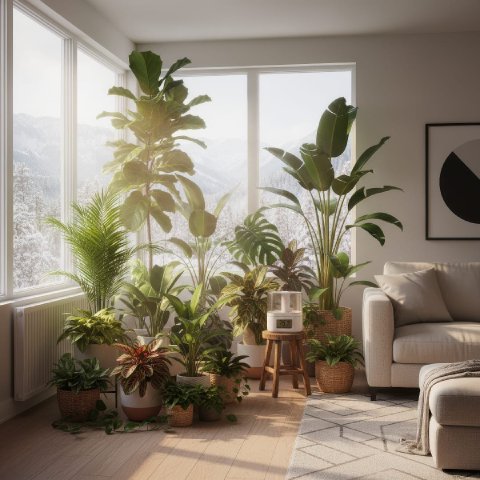
These small changes help maintain even temperatures and humidity-two key ingredients for happy winter houseplants.
⚖️ A Note on Balance
Perfection isn’t the goal. A little fluctuation is normal; what hurts plants is rapid change.
Focus on keeping air circulation gentle and temperatures steady from morning to night.
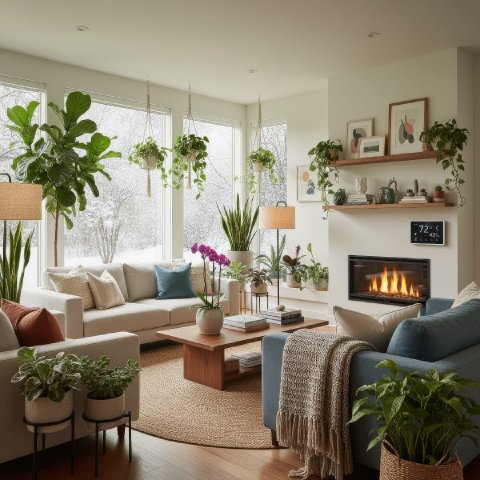
If you’re comfortable in the room-neither bundled in a sweater nor sweating from heat-your plants are probably content too.
📚 Related Reading
For a complete seasonal overview, check out our Winter Houseplant Care Checklist.
You might also like:
